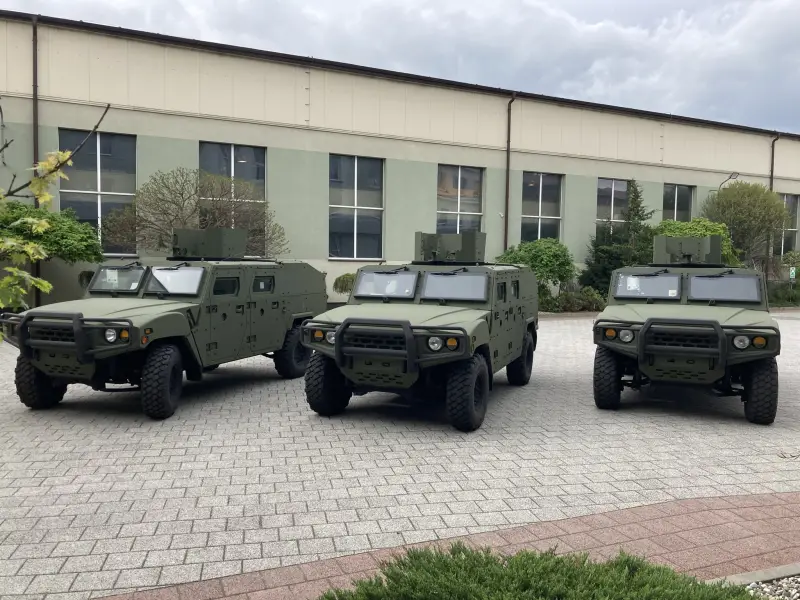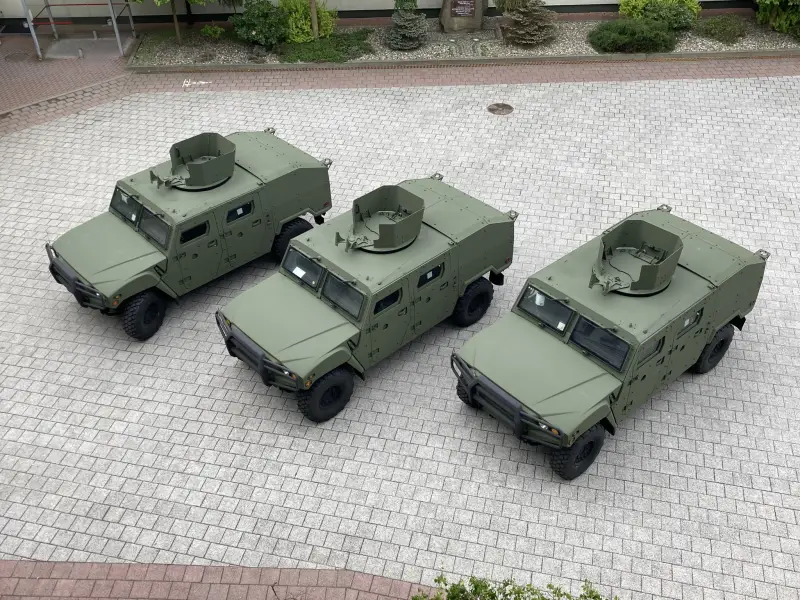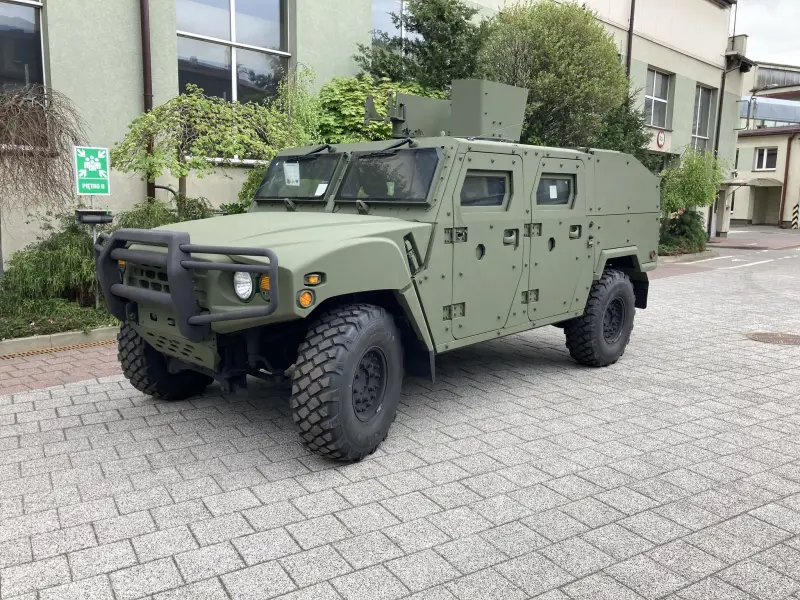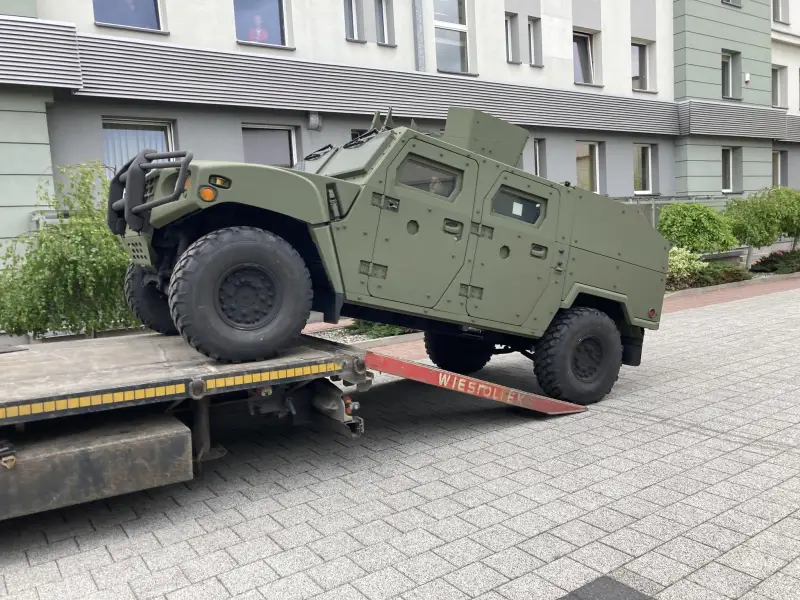Poland received the first Korean KLTV armored cars

The first KLTV armored cars in Poland
The military and political leadership of Poland has conceived and is implementing several large rearmament programs, providing for the purchase of this or that equipment and weapons. One of these programs proposes to supplement the Polish army fleet with several thousand LPR Legwan armored vehicles - a modified version of the South Korean KLTV vehicle. The first armored cars ordered recently arrived from South Korea to Poland.
Contract and its terms
Currently, the Polish army has a fairly large fleet of light armored vehicles, including vehicles of various types. A significant part of this equipment entered the units back in the days of the ATS and has long been in need of replacement. In addition, a negative factor is the deunification of the park, which complicates its operation. In this regard, in the recent past, a decision was made to massively purchase new armored vehicles.
The army held the necessary competitive events and chose the most successful, in its opinion, armored car for purchase. On August 14, 2023, the Polish military department and the military-industrial association Polska Grupa Zbrojeniowa SA (PGZ) signed an agreement for the supply of 400 LPR Legwan multi-purpose armored vehicles. The cost of this contract is set at 1,2 billion zlotys (approx. 290 million US dollars).
The framework contract was signed by Polish organizations, but in fact we are talking about international cooperation. The armored car LPR (Lekki Pojazd Rozpoznawczy) - “Light reconnaissance vehicle”) is actually a slightly modified Kia Light Tactical Vehicle / KLTV / Raycolt product of South Korean design. In this regard, there is an additional Polish-Korean agreement for the supply of finished vehicles and components for their assembly.
Under the terms of the signed contracts, the South Korean corporation Kia Motors will have to independently build and transfer to the customer the first few batches of LPR armored cars. In parallel with this, it will help the Polish company Rosomak SA, part of PGZ, to organize the production of such equipment. The Rosomak plant in Siemianovice-Slask will first master the large-unit assembly of armored cars from Korean components. In the future, they plan to partially localize production and reduce the supply of units from abroad.

As part of the contracts, Rosomak SA will also have to provide technical support, maintenance and repairs of armored cars. South Korean colleagues will also help the Polish company in launching such processes.
New technology
The development company Kia Motors mastered the mass production of KLTV cars several years ago, and this to a certain extent simplified the fulfillment of the Polish order. Thus, it took less than eight months to manufacture and prepare for delivery of the first batch of armored cars, and these vehicles were recently handed over to the customer.
On April 16, 2024, the Rosomak enterprise announced the arrival of the first three Korean-assembled armored vehicles and also showed them. These vehicles are planned to be used as a kind of training tool - specialists from the Polish plant will have to study the armored cars before starting assembly. In addition, the resulting products will be tested and demonstrate their capabilities.
In the near future, Poland will receive new batches of South Korean-assembled equipment. These armored cars will arrive without some equipment and weapons - they must be installed by the Rosomak SA plant. The completed and equipped vehicles of the first batch will be transferred to the troops by the end of this year. After the release of several batches using this principle, there will be a transition to large-scale assembly in Poland from Korean kits, but the timing of this remains unknown. It is expected that production of LPR Legwan products will be localized until the current order for 400 units is completed.
The existing contract provides for the supply of 400 armored vehicles until 2030 inclusive. The production of equipment will not stop there. Towards the end of the decade, new orders for additional batches of armored cars should appear. In total, the Polish army can order up to 3 thousand vehicles in different configurations. It is unknown how long it will take to solve production problems of this scale. The cost of all the required equipment also raises questions, as does Poland’s ability to pay for supplies, given the presence of a number of other expensive programs.

Serial sample
The KLTV multi-purpose vehicle was developed and presented by Kia Motors in 2015. Potential customers were offered a multi-purpose wheeled platform capable of transporting various cargoes, carrying weapons, etc. It was planned to release an unprotected and armored version of the car. With all this, the developers focused on a good balance between technical and operational characteristics.
Predictably, the South Korean army became the starting customer for KLTV. In 2016, it adopted several basic modifications of the car, including a protected one. Several hundred vehicles have already been built for the Korean armed forces. Subsequently, such equipment was acquired by Mali, Nigeria, the Philippines and Turkmenistan. Poland has become the next buyer, and negotiations are underway with other countries.
The KLTV product is a two-axle multi-purpose vehicle with a bonnet-type body. The car is equipped with a Hyundai S2 D6EB diesel engine with a power of 225 hp. and a transmission based on the Hyundai Powertech A8TR1 automatic transmission, transmitting torque to all wheels. On the highway the car reaches speeds of up to 130 km/h. Cruising range – at least 560 km.
Armored modifications of KLTV receive protection based on ceramic and polymer elements, as well as bulletproof glass. Various armor configurations are offered that meet level 2 or 3 of the NATO standard STANAG 4569 - the crew is protected from 7,62 mm bullets from machine guns and rifles. Maximum armor brings the vehicle's curb weight to 7 tons, which is 1,3 tons more than the unprotected modification.
The roof of the hull has a hatch for the shooter and a place for installing weapons. The KLTV can carry machine guns or grenade launchers of various types, as well as anti-tank missile systems. Remote-controlled combat modules have not yet been installed on such an armored car, although in principle nothing prevents this.

By installing different components, instruments and weapons, different modifications of the KLTV are created. The basic version of the armored vehicle is a simple vehicle for transporting up to 7 people. Such a product can be equipped with weapons. The installation of additional surveillance equipment is provided - with them you get a command post or reconnaissance patrol vehicle or a mobile artillery reconnaissance point. The unprotected version of KLTV is also available in several versions, incl. with a single-row cabin and an enlarged cargo platform.
Mutual benefit
In general, the South Korean-developed KLTV armored car is a typical modern vehicle in its class. It has a traditional technical appearance and a fairly high level of characteristics, and is also suitable for use as a base for various specialized samples. The technical potential of the design has already translated into commercial successes - KLTV of various modifications are in service with a number of countries, and new export contracts are expected.
Last year, Kia Motors received a contract to supply finished armored cars and vehicle kits for their assembly to Poland. We are talking about 400 vehicles with an expansion of the order in the future. This is at least one of the largest orders for KLTV, and it is of particular significance for the South Korean company. Firstly, it will allow you to earn a large sum and keep businesses busy for several years, and secondly, the Polish order makes good advertising for armored cars.
The Polish army will also benefit from receiving new armored cars. It will have the opportunity to write off outdated equipment and replace it with modern models. At the same time, all the characteristic advantages of new machines and fleet unification will be achieved.
Therefore, the recent delivery of the first three KLTV armored vehicles is of great importance for both countries involved in the production program. Poland and South Korea are counting on long-term and fruitful cooperation, and not only in the field of armored vehicles. Time will tell whether it will be possible to fulfill all plans for KLTV / LPR and get the desired results.
Information